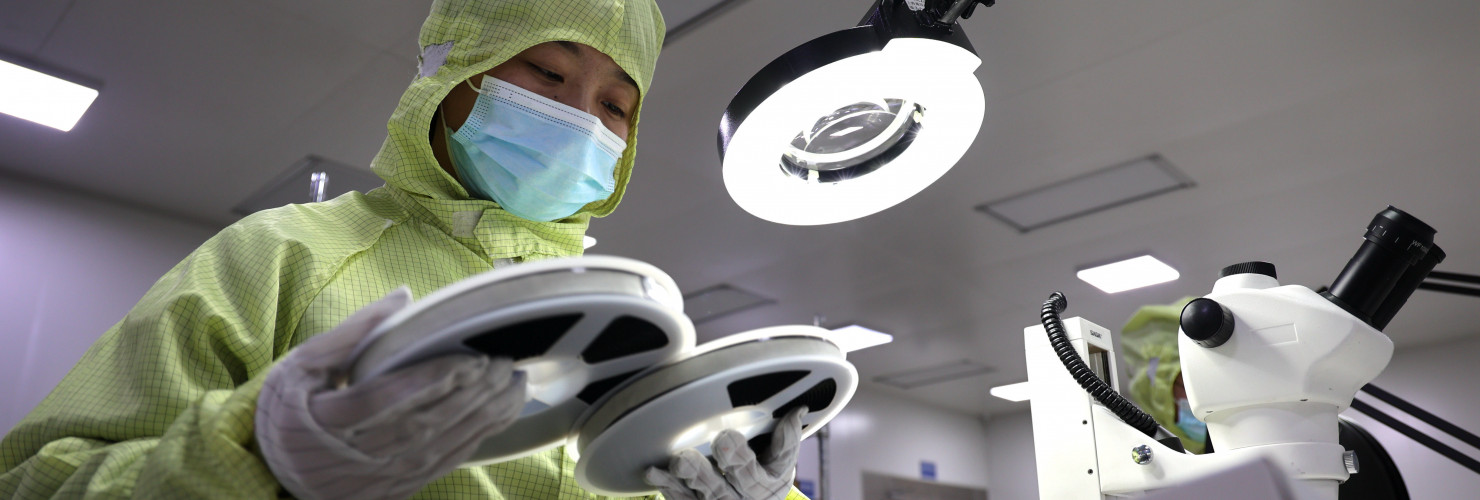

China faces an uphill climb while the West needs to make unpopular choices
While G7 nations must overcome a market efficiency gap, China must overcome a technology effectiveness one, say Jacob Gunter and Antonia Hmaidi.
Strategic export controls are now a two-way street: As of 1 August, China will require licensing for exports of Germanium and Gallium, two metals needed for advanced electronic components.
Meanwhile, the US and a coalition of other chip-making nations are controlling the export of high-end semiconductors and machinery to China. To be less vulnerable to such chokepoints, China and the G7 are locked in a competition to rid themselves of their mutual economic interdependencies, which are bountiful on both sides.
However, this “derisking” poses an asymmetric challenge for both sides: The G7 must overcome a market efficiency gap, while China must overcome a technology effectiveness one.
Gallium and Germanium are refined chiefly from the byproducts of Aluminum and Zinc smelting respectively. China produces 97% of the world’s primary Gallium and around two-thirds of the world’s Germanium, not because of superior technology, but because of a hyper-efficient market.
If the G7 wanted to replace China as their Gallium and Germanium supplier, it could do so as quickly as it could build refining plants using tech that it already has – but it would require subsidization and protection that would go against their free-market instincts, as well as tolerance for onshoring this highly polluting industry.
China, on the other hand, cannot produce high-end semiconductors without considerable leaps in innovation across a wide range of technologies in the semiconductor value chain.
Worse yet, China must do this alone, as its friends in Moscow, Pyongyang, and elsewhere have little to offer Beijing technologically speaking, while the G7 and its friends would be able to coordinate and share the load of boosting market efficiency.
That doesn’t mean Xi Jinping will back away from his tech self-reliance campaign, but there is a long way to go across many different technologies beyond just semiconductors, including often overlooked industrial inputs, like coating for cans and bottles to withstand highly corrosive substances like acidic drinks.
However, China does not need to fully “catch up” with foreign technology, because its large and protected home market will provide a path toward efficiency in due course.
Once Chinese producers can produce good-enough technology, i.e., achieve most of what a given technology can do, they can scale up until effectiveness leads to efficiency. This infamously happened with high-speed rail, where China started out behind but compelled foreign suppliers into Joint Ventures with local rail firms (involving extensive tech transfer), which quickly led to indigenous producers that were good enough.
After that, procurement heavily favoured local brands. With a protected home market advantage, they built an economy of scale that led them to efficiency and a high level of global competitiveness.
The G7’s market efficiency gap is the easier challenge because China does not really have any technologies that at least someone in the G7 hasn’t already mastered. Yet, for market efficiency reasons, G7 countries have outsourced many supply chains to China to save on costs and offshore environmental impacts. Gallium and Germanium fit that description, but so do many other goods, like solar panels.
Currently, over 80% of global solar panel manufacturing capacity is in China, even though Germany and other EU countries pioneered the tech and still lead in research.
For China, closing the tech effectiveness gap is highly uncertain.
Some Chinese industries, like high-speed rail or telecoms infrastructure such as 5G, were able to overcome this gap. But others, like semiconductors, still lag significantly even though Beijing has leveraged the same policy instruments heavily. The most successful examples from a Chinese point of view also all benefitted considerably from technology transfer from G7 companies, something they may not be able to rely on as heavily as the tech war progresses.
It will be easier for the G7 to overcome the market efficiency gap, but these countries will face uncomfortable decisions. Reshoring or friend-shoring will only be possible with the right incentive mix, at least until gains in market efficiencies outside of China enable an organic transition of key value chains to other, less risky markets.
In the meantime, the G7 will need to consider state intervention in at least the most relevant parts of the economy, which will run contrary to liberal market economics.
One good place the G7 could start is in preventing a race to the bottom in addressing market inefficiencies. There’s no reason for like-minded partners to all pursue a copy-paste subsidy regime for Gallium, Germanium, or solar panels. That will only generate waste, overcapacity, and a whole different mix of market inefficiency problems.
Instead, short-term attention should be given to coordinating which countries are best suited to which part of any given value chain, all while working towards a post-subsidy solution.
Japan’s economic security strategy, which focuses on being indispensable instead of being present across all market segments, could be a blueprint for other countries, especially if combined with solid coordination.
In the medium to long term, the G7 could consider what needs to be done to boost market efficiencies in their own markets or in friendly ones. There is no “second China,” but 40 years ago there was no “first China” – the “world’s factory” emerged from extensive foreign investment, deep infrastructure development, and robust governance.
The G7 could bring their considerable resources to bear in building up other world’s factories and help solve the market inefficiency gap in a sustainable way that would make market interventions temporary.
This article was first published by Euractiv on August 3, 2023.

